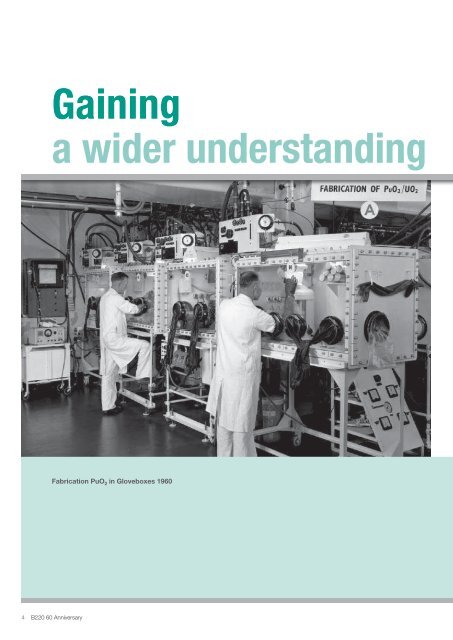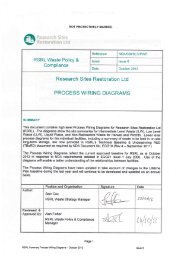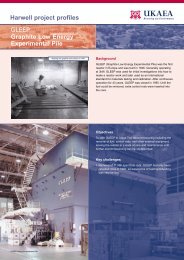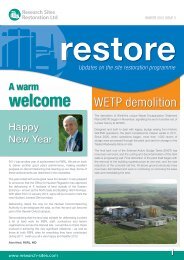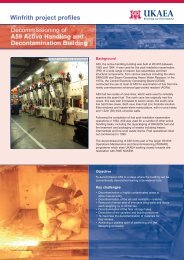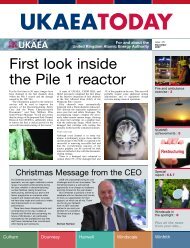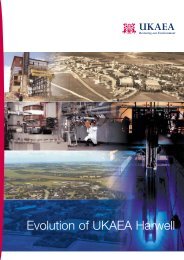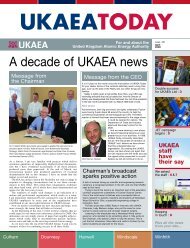B220 - Research Sites Restoration Ltd
B220 - Research Sites Restoration Ltd
B220 - Research Sites Restoration Ltd
- No tags were found...
You also want an ePaper? Increase the reach of your titles
YUMPU automatically turns print PDFs into web optimized ePapers that Google loves.
Gaininga wider understandingAs part of the national atomic energy research and development programme,scientists at the Harwell laboratories studied the chemistry of irradiated fuels andactinides – radioactive heavy metals, such as plutonium, protactinium and neptunium.At this time, they in fact led the world in the development of reprocessing techniquesto isolate and purify plutonium from irradiated fuel.Not a naturally occurring element, plutonium is obtainedas a by-product of the irradiation of uranium fuel. Thechemical extraction of plutonium during the reprocessingof irradiated fuel ensured the laboratories had a supply ofthe element for fundamental research into its behaviour.In the 1940s and 1950s, the potential uses for plutoniumwere high profile. So, gaining an understanding of chemicalextraction methods, and the physical and chemicalproperties of both uranium and plutonium oxides andcarbides, was essential for nuclear energy research.Rapidly expanding programmeTo begin with, the scientists’ experiments were on asmall scale but the pace stepped up as larger quantitiesof material became available from reactors at Harwelland Windscale. Before long, the UK’s rapidly expandingnuclear programme required the production of actinideelements in industrial quantities, as well as reactor fuelsfor a variety of prototype reactor types. A demand thatHarwell’s radiochemical laboratories met.To ensure the safety of nuclear reactors, now as then, itis essential to be able to understand how fuels behaveunder extreme conditions. The scientists and engineersof the radiochemical laboratories were at the forefront inthis field, providing much-needed data for the designersof early reactors and of fuel fabrication, enrichment andreprocessing plants.The work of the laboratories expanded throughoutthe 1950s and an extension to the building was soonneeded to provide an additional glove-box hall.Following the construction of the first commercialMagnox reactors, research on the fast reactor fuel cyclebecame an important part of the work. Reactor fuelstudies, originally concerned with metal materials, nowexpanded to cover uranium and plutonium oxides andcarbides. By now, the skill base of the staff had widenedto include physicists, metallurgists and ceramicists tocomplement the chemists.Fabrication PuO 2 in Gloveboxes 1960(U, Pu) O 2 Spherical Fuel ParticlesGlovebox Hall extension early 1950sVacuum Line for Preparation ofActinide Fluorides4 <strong>B220</strong> 60 Anniversary <strong>B220</strong> 60 Anniversary 5


